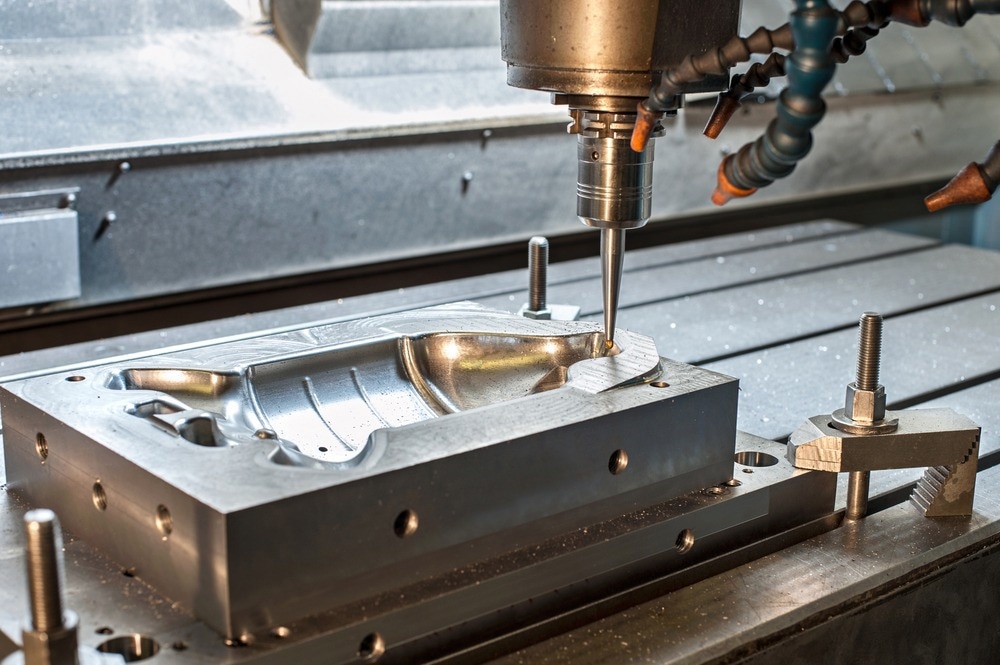The latest article in the journal Surface & Coatings Technology provides an analysis of solid solution strengthening (SSS) of Sn and Pb in aluminum (Al) matrix when exposed to a high current pulsed electron beam (HCPEB).

Study: The surface alloying of aluminum with Sn and Pb for enhancement mechanism under high current pulsed electron beam. Image Credit: AnnaElizabeth photography/Shutterstock.com
Importance of Aluminum and Its Alloys
Aluminum (Al) and its alloys are widely used in a variety of sectors, including automotive, athletics equipment, aviation, and electronic parts, due to their superior ductility and excellent mechanical properties. Owing to their excellent abrasion and wear attributes, Al alloys are comprised of softer atoms (such as Sn and Pb) are frequently used as dragging impact substances in powerplants.
Effects of Doping Aluminum
Introducing elemental granules for softening would undoubtedly result in a deterioration of the alloy strengthening. As a result, researchers focused on transforming the doping atoms into a solid solution to overcome the issue. Furthermore, the strength gain is highly dependent on the solubilization of the element being introduced into the matrix.
Limitations of Addition of lead (Pb) and Tin (Sn)
The drawback of the Pb/ and Sn/Al frameworks in crystalline solids is that they have positive blending enthalpy changes. At ambient temperature, the solute atoms' dissolution rate in the composite structure is marginal, which is referred to as binary immiscibility. In essence, the alloying challenges in these insoluble systems are attributed to a lack of exterior motivating factors, which can be overcome using non-equilibrium techniques.
Introduction to High Current Pulsed Electron Beam (HCPEB) Irradiation
Radiation exposure with high current pulsed electron beam (HCPEB) has recently been suggested as a potential non-equilibrium innovation for immiscible systems. Previous studies established that rapid thermal heat treatment stress during the HCPEB procedure developed a large number of faults such as vacancy, destabilization, and grain boundaries (GBs).
The energy stored in these frameworks could serve as a means for diffusion. Meanwhile, the locations in these deformities acted as preferable solute separation via inter-diffusion, ultimately prolonging the formability of immiscible systems.
Such modified microstructures may not only facilitate the creation of solid solutions but may also result in an outer layer with dramatically improved qualities following HCPEB radiation exposure.
Solid Solution Strengthening and HCPEB
Owing to the poor solubility, solid solution strengthening (SSS) may be vanishingly small. Irradiation of the HCPEB will increase solubility and increase the impact of SSS. Quantitative measurements of independent reinforcement variables are required to evaluate the involvement of SSS under HCPEB irradiation. Precise measuring functions, such as lattice distortion, grain size, size distribution, and solute solubility, are required to accurately classify this.
Factors Affecting Alloy Strengthening
Primarily, one of the microhardness key parameters for reinforcing alloys has been the addition of solute to form a solid solution. The primary method of SSS is the engagement between misalignments and solute anomalies. Solute reinforcement has a physical origin that is profoundly connected to elastic moduli such as the shear modulus.
Furthermore, the initiation of solute atoms into the composite crystalline structure causes it to develop and demonstrate more deformation strengthening as concentration is increased. Recognizing SSS at varying concentrations is critical for improving the characteristics of Al alloys and developing innovative materials.
Models for Studying SSS
To assess the impact of SSS, frameworks have been developed. The Labusch model, which recognizes solute reinforcement systems as a simultaneous occurrence of several solute molecules around the deformations, is appropriate for the majority of metals and engineering fields. The solid solution strengthening in this model was primarily determined by the lattice constant, moduli, and solute concentration.
Research Findings
The optimum lattice constants of the mass Al primitive cell (4 atoms) were enhanced based on the figures to be a=4.039, which are consistent with the experimental scientific data (a=4.049), illustrating the validity of the calculations.
Furthermore, the investigational lattice parameters were roughly continuous with theoretic results. The linear fit lattice constants of theoretical and experimental results showed ideal accordance with Vegard's law, which was possible to forecast the lattice parameters of Pb/ and Sn/Al systems.
As the concentration was increased, the strength of both Al-based solutions increased. As a result, the concentration of the solute is essential for effective reinforcement. The strength of Al(Pb) solid solution was significantly greater than that of Al(Sn) single crystal at the same intensity. This can be explained by the increase in the strength of various solute molecules.
In short, hypothetical calculations show that the Sn atom preferentially combines with Al atoms over the Pb atom. As a result, SSS plays an important role as a reinforcement framework during HCPEB irradiation.
Reference
Zhang, C. et. al. (2022) The surface alloying of aluminum with Sn and Pb for enhancement mechanism under high current pulsed electron beam. Surface and Coatings Technology. 128640. Available at: https://www.sciencedirect.com/science/article/pii/S0257897222005618?via%3Dihub
Disclaimer: The views expressed here are those of the author expressed in their private capacity and do not necessarily represent the views of AZoM.com Limited T/A AZoNetwork the owner and operator of this website. This disclaimer forms part of the Terms and conditions of use of this website.